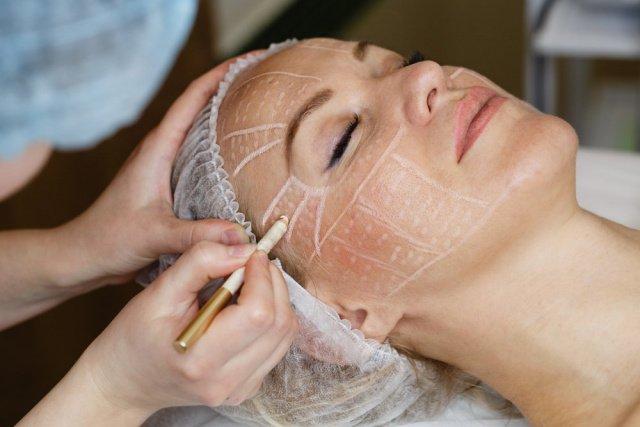
Undergoing a facelift is a significant step toward achieving a more youthful and refreshed appearance. However, the real success of the procedure depends not only on the surgeon’s expertise but also on how well you care for your skin during the recovery period.
Facelift in Dubai top cosmetic surgeons emphasize the importance of proper aftercare to ensure smooth healing, long-lasting results, and minimal complications. In this guide, we’ll walk you through everything you need to do after a facelift to achieve the best possible outcome.
1. The First 24-48 Hours: Immediate Aftercare
The initial 48 hours after surgery are crucial for healing. You will likely experience swelling, bruising, and mild discomfort, which is completely normal.
🔹 Have a Caregiver – Arrange for someone to assist you for the first 24 hours.
🔹 Keep Your Head Elevated – Sleep with your head elevated at a 45-degree angle to minimize swelling.
🔹 Use Cold Compresses – Apply an ice pack (wrapped in a soft cloth) around swollen areas for 10-15 minutes every hour.
🔹 Avoid Straining – Do not bend, lift heavy objects, or engage in any strenuous activity.
🔹 Take Prescribed Medications – Follow your surgeon’s instructions for pain management and antibiotics.
💎 Tip: Your face may feel tight or numb, but this is temporary and will gradually improve.
2. Managing Swelling & Bruising (First Week)
Swelling and bruising are common side effects of a facelift, peaking around day 2-4 and gradually improving over 2-3 weeks.
✅ What You Can Do:
✔ Drink Plenty of Water – Helps flush out toxins and reduce swelling.
✔ Eat a Healthy Diet – Focus on protein-rich foods (chicken, fish, eggs) and vitamin C (oranges, bell peppers) to boost healing.
✔ Avoid Salt & Alcohol – Reduces fluid retention and prevents excessive swelling.
✔ Gentle Walking – Light movement helps prevent blood clots and improves circulation.
✔ No Smoking or Vaping – Nicotine slows down healing and can cause complications.
💎 Tip: Sleeping with an extra pillow under your head can further reduce swelling.
3. Skincare & Incision Care (Weeks 1-4)
Proper wound care is essential to prevent infections and minimize scarring.
✅ How to Care for Your Incisions:
✔ Keep the Area Clean – Follow your surgeon’s instructions on washing your face gently with mild soap.
✔ Apply Antibiotic Ointment – If prescribed, use it to keep the stitches clean and moisturized.
✔ Avoid Harsh Skincare Products – No retinol, acids, or exfoliants until cleared by your doctor.
✔ Do Not Pick Scabs – Let them heal naturally to prevent scarring.
💎 Tip: After 3-4 weeks, you can start using scar-reducing creams (like silicone gel) to improve healing.
4. When Can You Resume Normal Activities?
📆 1 Week Post-Facelift:
✔ Light activities such as short walks are encouraged.
✔ Swelling and bruising start to subside, but some puffiness remains.
📆 2 Weeks Post-Facelift:
✔ Stitches or sutures are usually removed by day 7-10.
✔ Most patients feel comfortable going out with makeup.
📆 3-4 Weeks Post-Facelift:
✔ Swelling is significantly reduced.
✔ You can resume moderate exercise, but avoid high-impact workouts.
📆 6 Weeks & Beyond:
✔ Final facelift results start becoming visible.
✔ You can resume all normal activities, including intense workouts.
💎 Tip: Avoid direct sun exposure for at least 3 months and always wear SPF 50 sunscreen.
5. How to Maintain Your Facelift Results for Years
A facelift can make you look 10-15 years younger, but the results will only last if you take care of your skin. Here’s how to maintain your youthful appearance:
✅ Follow a Skincare Routine:
✔ Use gentle cleansers & hydrating serums to keep skin fresh.
✔ Apply retinol & collagen-boosting products after 6 weeks.
✔ Use moisturizer daily to prevent dryness.
✅ Protect Your Skin from Sun Damage:
✔ Apply broad-spectrum sunscreen (SPF 50) every day.
✔ Wear hats & sunglasses when outdoors.
✔ Avoid tanning beds & excessive sun exposure.
✅ Consider Non-Surgical Touch-Ups:
✔ Botox & Fillers – Maintain smooth skin & restore lost volume.
✔ Ultherapy or RF Microneedling – Stimulate collagen for long-term tightening.
✔ Chemical Peels or Laser Treatments – Keep skin fresh & radiant.
💎 Tip: Get a yearly consultation with your cosmetic surgeon for maintenance treatments.
6. Common Mistakes to Avoid After a Facelift
🚫 Overexerting Too Soon – Strenuous activity can cause swelling and complications.
🚫 Skipping Follow-Up Appointments – Surgeons monitor your healing progress and catch any issues early.
🚫 Smoking & Drinking Too Soon – Can delay healing and affect final results.
🚫 Touching or Rubbing Your Face – May cause irritation or disrupt healing incisions.
💎 Tip: Be patient! Full results can take 3-6 months to appear.
7. Why Dubai is the Best Place for a Facelift
Dubai is a global leader in cosmetic surgery, offering:
🌟 World-Class Plastic Surgeons – Highly skilled experts with years of experience.
🌟 Luxury Clinics & Advanced Techniques – Cutting-edge technology for the best results.
🌟 Personalized Aftercare & Recovery Plans – Ensuring a smooth and successful healing process.
With the right surgeon, aftercare, and lifestyle choices, you can enjoy long-lasting, natural-looking facelift results in Dubai.
Final Thoughts: How to Get the Best Post-Facelift Results
✔ Follow your surgeon’s aftercare instructions carefully
✔ Be patient with swelling & bruising – Healing takes time!
✔ Protect your skin from sun exposure & use proper skincare
✔ Consider non-surgical touch-ups for long-term maintenance
By taking care of your skin and following the right recovery plan, you’ll enjoy stunning, youthful results that last for years!
✨ Thinking about a facelift? Consult a top Dubai surgeon to achieve natural, long-lasting beauty! ✨

